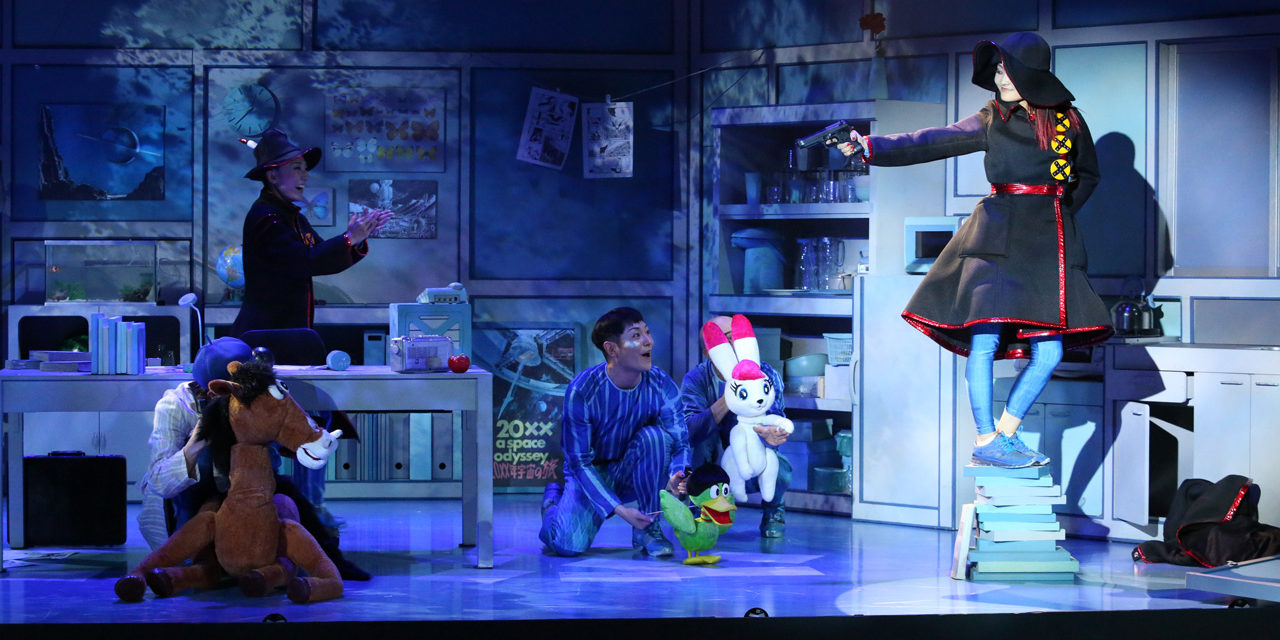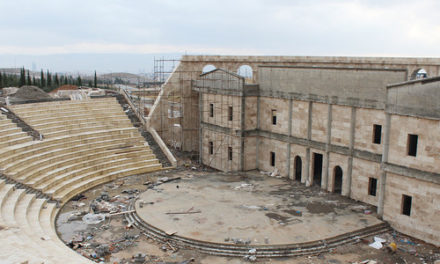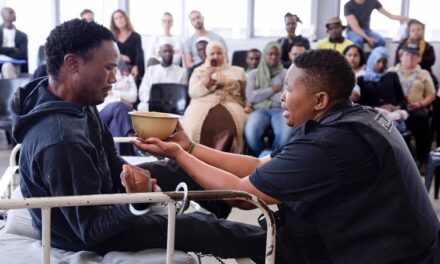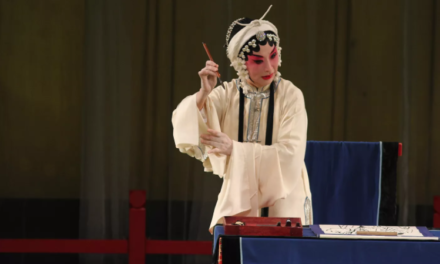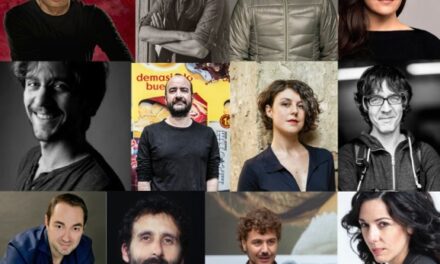Never mind those North Korean missiles that provide politicians with heaven-sent pretexts to posture. These days, everyone’s talking about a boozy party held by Mongolian sumo wrestlers that turned violent reportedly because of a generational dispute over the arcane traditions of Japan’s highly regimented national sport.
In this country long run by male elders little interested in the outside world and averse to any kind of change, such frictions are not confined to sumo. Indeed, even this roundup of the past year in the world of Japanese theater needs to be set against a backdrop of similar tensions.
In light of that, it’s gratifying to see Arts Council Tokyo playing catch-up with the launch of a new large-scale event named Tokyo Festival, which aims to showcase both traditional and modern Japanese performing arts to the world. For sure this may only be happening because of the spotlight the 2020 Olympics will shine on Japan, but if it’s anything like the marvelous “cultural Olympics” in London in 2012, it’s surely to be applauded.
Though this is a welcome move from the often hidebound public sector, some private theater companies have been engaging internationally for years as they’ve sought to tailor their productions to Japan’s growing number of foreign tourists.
In doing so, of course, these pioneers have had to overcome their homeland’s generally blinkered global outlook. However, with the impact of “cool Japan” around the world in fields such as food, anime, manga, J-pop, and computer games—much like the South Korean entertainment scene that’s drawing overseas visitors to musicals and nonverbal theater shows in Seoul—this country’s producers and creators are now well aware of tourism’s potential earning power for the arts.
Hence 2017 has been notable for its small slew of long-running nonverbal shows catering both to in-country tourists unused to theater and overseas visitors who’d never have thought of “taking in a show” here before. In the process, these action-packed attractions—typically featuring hi-tech projections, loud music and stunning effects—may come to be associated globally with Japanese theater, which tourists now think means kabuki, noh, and the like.
As the businessman Kazutoshi Tanuma told The Japan Times before venturing into theater production for the first time with Alata, a show combining chanbara (sword fighting) and hip-hop that opened in Tokyo’s shopping and dining hub of Ginza in July, “Some restaurants and bars feature acts of various sorts, but I wanted to create a theater where people come to see the performance itself, not as a side-serving with food or drinks.”
Soon after that, one of Japan’s leading production companies, Kyodo Tokyo, also plunged into the nonverbal theater market with Fuerza Bruta WA!, a country-specific version of the internationally acclaimed Fuerza Bruta! entertainment spectacle from Argentina.
Staged in an open-air, all-standing marquee, this ongoing event features visceral drum-beat music in a high-energy setting with circus-like aerial performers in kimonos and others swimming in a clear polythene pool overhead or dressed as samurai smashing through walls, and much more besides.
Then, last month, Kyodo Tokyo opened another nonverbal show titled Manga Performance W3. A similarily kinetic production, this too features acrobats, dance, magic, pantomime, and projection-mapping in a work based on manga pioneer Osamu Tezuka’s sci-fi masterpiece W3.
Meanwhile, besides drawing audiences from overseas to Japanese stages, 2017 has also seen more top Japanese dramatists earning star billings in Europe.
Among these, Toshiki Okada, founder of the cutting-edge Chelfitsch theater company, was invited to stage the world premiere of his latest work, a contemporary noh trilogy titled No Theater, in February at the Munich Kammerspiel, one of Germany’s leading theaters.
Superbly acted by its German cast, the play drew standing ovations for its vivid, cleverly incisive portrayal of the directionless state of today’s Japan, and Okada has now been commissioned to create another new program next year with a view to more after that.
In a similar but even more exalted vein, July in southern France saw the greatest international honor of the year bestowed on Japanese theater when Satoshi Miyagi’s unforgettable staging of the ancient Greek tragedy Antigone was chosen to open the annual Avignon Festival, one of the world’s top-notch arts events.
With its haunting percussion music, its “stage” in the medieval Square of the Palace of Popes, and its white-gowned cast drawn from actors at Shizuoka Performing Arts Center, where Miyagi is the artistic director, the epic work played to astonishing acclaim from full houses every day for a week.
In addition, from more than 60 reviews across Europe it was clear that the bold, non-Christian idea Miyagi presented—that everyone is equal after death and no one is judged and consigned to heaven or hell—posed absorbing universal questions even in that former heart of the Roman Catholic Church.
Finally, in another trend gathering steam as Japan’s theater world casts off its insularities, the number of international collaboration works continues to grow, with two, in particular, standing out in 2017: the musical Billy Elliot and Shakespeare’s Richard III staged by the leading Romanian director Silviu Purcarete.
Just as Okada shone in Munich this year, at last, it’s slowly becoming the new normal here for foreign directors to be invited to work with Japanese actors and staff. It’s also increasingly clear that this is yielding fresh and fruitful approaches even to familiar works.
For example, in the case of Billy Elliot, the British production team took infinite pains to acquaint the Japanese cast with the musical’s roots in a heartrending 1984-85 U.K. coal miners’ strike the government used to kill off the industry. Also, in contrast to Japan’s production-line theater system, they oversaw a remarkably long audition process to select five boys to play the titular hero over the musical’s three-month run.
Meanwhile, in Richard III the Romanian director superbly married his own spine-chilling aesthetic sense to his all-male (with one exception) cast of top Japanese actors to create a unique and overpowering new take on the Bard’s famed tragedy.
So, all in all, 2017 marked something of a crossroads for Japanese theater. Whether it continues to innovate and seek out a diverse new following—as sumo, too, must surely do—or whether it myopically retreats to its comfort zone, only time will tell. But what the last 12 months have shown is that this country is blessed with many artists who are more than capable of putting Japanese drama on the world map both commercially and artistically. Bring it on!
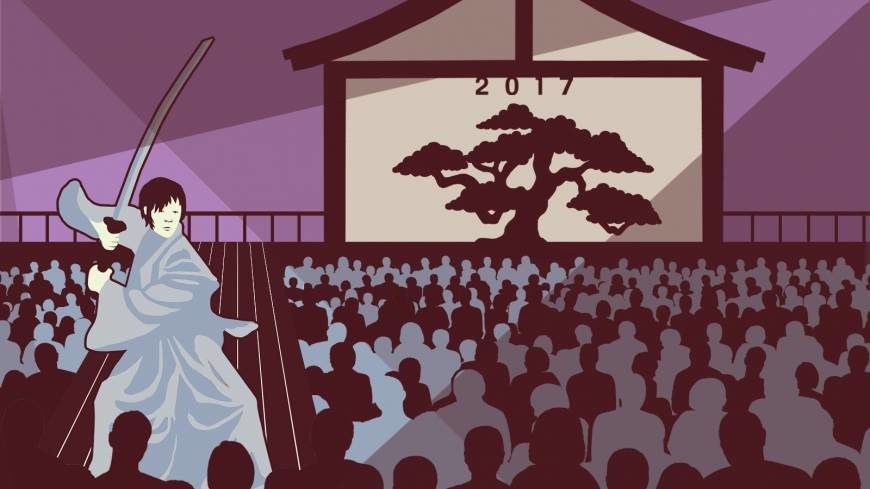
Illustration By Michael C, Smith
This post originally appeared in The Japan Times on December 19, 2017, and has been reposted with permission.
This post was written by the author in their personal capacity.The opinions expressed in this article are the author’s own and do not reflect the view of The Theatre Times, their staff or collaborators.
This post was written by Nobuko Tanaka.
The views expressed here belong to the author and do not necessarily reflect our views and opinions.

